The American Dance Festival Archives serves as the repository for records of enduring historical value created and collected by ADF. The Archives preserves its collections for use by the dance community, including students, scholars, and the general public.
The Archives encourages research and scholarship on the historical, cultural, and international significance of modern dance through the ongoing development of its resources, providing access to its collections, and participating in the dance archives community. In all its activities, the Archives supports and furthers ADF’s commitment to the creation and preservation of the art form.
In addition to festival materials, the Archives collects videos, photos, audiotapes, and personal papers created by other individuals and institutions that document the development and history of modern dance and its relationship to American culture and society.
Materials from the ADF Archives may be viewed by appointment in the David M. Rubenstein Rare Book & Manuscript Library at Duke University. Visits may be arranged in advance by contacting the ADF archivist at adf@americandancefestival.org. Visitors will need to comply with Duke’s registration and security policies.
Contains correspondence, lists, administrative materials, memoranda, contracts, legal documents, financial records, class schedules, teaching materials, student records, clippings, press releases, publicity materials, brochures, tickets, posters, and other printed materials created by or related to the American Dance Festival prior to its move to Durham, NC, in 1978.
Approximately 2,000 films and videos from 1930 to the present, capturing dance performances, classes, panel discussions, showings, interviews, and special events at the American Dance Festival. Vewing copies of many of these films and videos can be seen at viewing stations in Duke University’s Lilly Library.
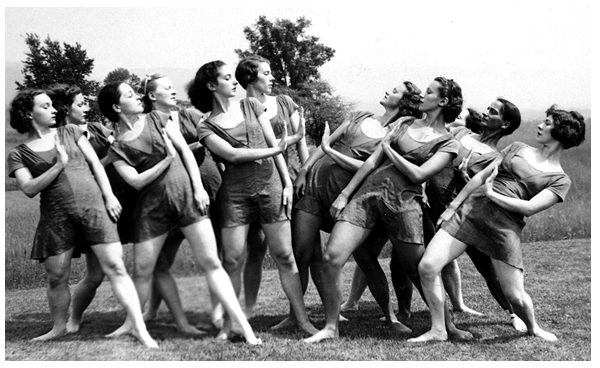
Graham Technique, Bennington College
Includes photographic materials created and collected by the American Dance Festival, including negatives, contact sheets, prints, and transparencies.
Includes materials collected by the American Dance Festival pertaining to choreographers, dance companies, and others involved in modern dance, including printed materials, newspaper and magazine clippings, press kits, programs, and correspondence.
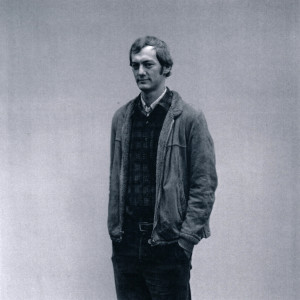
Jay Anderson by Jay Anderson
Jay C. Anderson (1956-2013) was the photographer for the American Dance Festival from 1978 to 1994. Born in Utica, New York, Anderson graduated cum laude with a Bachelor’s degree in history from Duke University in 1978. At Duke, he acted as photo editor for the student daily newspaper, The Chronicle and eventually became editor of Duke’s yearbook, The Chanticleer. Anderson photographed many Duke athletic events including basketball games and rugby matches. Anderson’s interest in dance developed when the American Dance Festival began its residency at Duke University in the summer of 1978. This collection contains documents, slides, negatives, and prints pertaining to ADF performances and student classes during Jay Anderson’s tenure as photographer for the American Dance Festival.
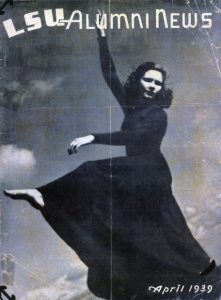
Ethel Tison Chaffin
Ethel Tison Chaffin was born on January 13, 1921 in Natchitoches, LA. From childhood on, she took dance classes with a variety of instructors and, as a college student, studied dance at Louisiana State University, New York University, the University of Maryland, and Bennington College. Instructors included John Martin (former dance critic at the New York Times), Charles Weidman (Humphrey-Weidman Technique), Ethel Butler (Martha Graham Technique), and Nina Fornoff (Hanya Holm Technique). Ms. Chaffin also participated in master classes with Martha Graham and Katherine Manning.
The collection contains the personal papers and dance-related memorabilia (circa 1930-1993) of Ethel Tison Chaffin. Materials include photographic prints, newspaper clippings, programs, and correspondence, which are housed within a scrapbook and one Hollinger box. Many of the materials are annotated by Ms. Chaffin.
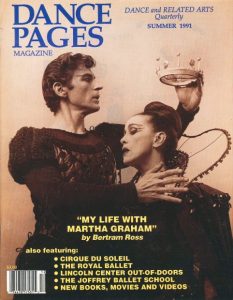
Dance Pages Magazine
Dance Pages, a quarterly magazine, presented its readers with articles about a wide range of dance genres, performances, companies, and individual dancers. The magazine also contained studio listings, book and video reviews, and information about dance history and health. Kenneth Romo and Donna Gianell, both professional dancers, created Dance Pages as a hobby, and they continued to serve as the publishers and editors of the magazine as it grew in size and scope. In 1995, the magazine changed names, becoming Dance & the Arts, and moved to a bimonthly publication schedule. The magazine dissolved around 1997.
The collection includes publicity information, magazines, drafts of articles and advertisements, paste-ups for advertisements and magazine features, newspaper clippings, press kits, programs, flyers, brochures, catalogs, invoices, personal and professional correspondence, photographs, contact sheets, negatives, 35 mm slides, and transparencies.
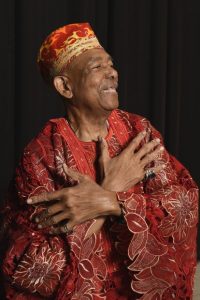
Chuck Davis by Grant Halverson, 2015
Dr. Charles Rudolph “Chuck” Davis or Baba Chuck (1937-2017) was an African American dancer, choreographer, and founder of the African American Dance Ensemble, the Chuck Davis Dance Company, and the annual DanceAfrica Festival. Davis founded the Chuck Davis Dance Company in 1968. The American Dance Festival offered Davis a position of artist-in-residence in 1971. After ADF’s move to Durham, NC in 1978, ADF offered Davis the position again in 1980 and later asked him to lead their Community Outreach Program, a position he held until 1987. Davis founded the African American Dance Ensemble in 1983. Davis received many awards and honors including the 1992 “Bessie” award for excellence, the 1992 North Carolina Award in Fine Arts, the Brooklyn Academy of Music Award for distinguished service, honorary doctorates from Medgar Evers College in New York and Williams College in Massachusetts, the 2004 Dance Magazine Award, the Balasaraswati/Joy Anne Dewey Beinecke Endowed Chair for Distinguished Teaching in 2006, and the international Capezio Award in 2007. The collection includes correspondence, paper based records, printed materials, teaching materials, programs, posters, publications, newspaper clippings, conference materials, notebooks, photographs, negatives, slides, super 8 film, artwork, and various other types of memorabilia.
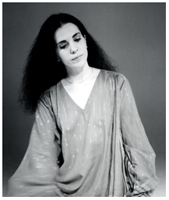
Laura Dean by Phillip Jones, 1974
Laura Dean (b. 1945) is an American choreographer and composer. In 1972, she established her company, Laura Dean Dancers and Musicians, where she created the choreography for forty works, and in most instances, created the music as well. Dean continued to create works for her company until 2000. She received the Samuel H. Scripps/American Dance Festival Award for lifetime achievement in recognition of her accomplishments as a choreographer and composer in 2008.
The collection includes photographic prints, contact sheets, negatives, slides, clippings, programs, printed materials, posters, VHS videotapes, and an audiocassette.
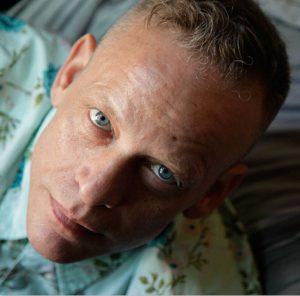
Mark Dendy
Mark Dendy (b. 1961) is a New York-based choreographer, writer, dancer, and actor. His career spans experimental dance theater, grand scale site specific work, pure movement dance pieces, opera, improvisation, Broadway, off-Broadway, and regional theater. Dendy also founded and served as Artistic Director of two dance companies: Mark Dendy Dance and Theater and Dendy Dancetheater. His work often responds to societal issues, examining diverse themes such as fame, gender, religion, heritage, violence, politics, the media, and values in society.
The collection includes newspaper clippings and photocopies, magazines, programs, flyers, large-scale posters, publicity materials, project files, notes and notebooks, financial documentation, and correspondence. Other materials include photographs, negatives, 35 mm slides, DVDs, and VHS, U-matic, Betacam, Betacam-SP, and DVCPRO tapes.

Jerome Stigler of Dayton Contemporary Dance Company in Talley Beatty’s Mourner’s Bench by Bruce R. Feeley, 1998
Free to Dance: The African-American Presence in Modern Dance was a three-part television documentary co-produced by the American Dance Festival and the John F. Kennedy Center for the Performing Arts in association with Thirteen/WNET New York. The series aired on PBS’ Great Performances: Dance in America in 2001. It chronicled the role of African-American choreographers and dancers in the development of modern dance as an American art form. The collection includes film, video, sound recordings, oral histories, interview transcripts, business records, photographs, clippings, and research materials created or collected during the production of the three-part television documentary Free to Dance.
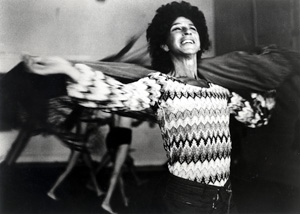
Anna Halprin by Connie Beeson, 1976
Anna Halprin (1920-2021) was a pioneering dancer and choreographer of the post-modern dance movement. She founded the San Francisco Dancer’s Workshop in 1955 as a center for movement training, artistic experimentation, and public participatory events open to the local community. Halprin created 150 full-length dance theater works and was the recipient of numerous awards including the 1997 Samuel H. Scripps Award/American Dance Festival Award. Her students included Meredith Monk, Trisha Brown, Yvonne Rainer, Simone Forti, Ruth Emmerson, Sally Gross, and many others. Collection includes books, magazines, photographic prints, clippings, flyers, written correspondence, programs, essays, and other printed materials
The Harper Theater Dance Festival (1965-1975) presented Chicago audiences with a decade of annual performance seasons from a variety of celebrated touring dance companies. Judith and Bruce Sagan, local newspaper publishers and dance impresarios, founded the festival in 1965 at the Harper Theater in the South Side of Chicago, Illinois. In 1970 the festival became part of the newly formed Harper Dance Foundation. In 1971 the festival was moved to the larger Civic Theater downtown because of increased audience demand. The final four seasons were hosted by the University of Chicago’s Mandel Hall. The early seasons featured a diverse array of dance performances, while later years focused more specifically on bringing the country’s most contemporary and experimental modern dance to Chicago audiences. Favorite performers included Merce Cunningham, Alwin Nikolais, and Paul Taylor. The festival and foundation became dormant after 1975, although they were briefly revived in 1979 to stage a performance of the Paul Taylor Dancers at Civic Theater. Collection includes photographic prints, negatives, slides, posters, press clippings, tickets, company publicity, and other printed materials.
Tony C. Johnson (b. 1959) is a choreographer and dancer who was based in Durham, NC, between 1984 and 2017. An active participant in both the American Dance Festival and the Duke University Dance Program, he served these communities as a volunteer and mentor. His body of independent choreographic work covers varied subject matter including the legacy of slavery, the HIV/AIDS crisis, faith, and masculinity, along with a sustained investigation of Negro Spirituals through dance. The collection includes legal notepads, spiral-bound notebooks, newspaper clippings, programs from performances, photographs, event fliers, personal correspondence, CDs, and VHS tapes.
Patricia Edison Powers Jones (1924-2011) was born in Waterbury, CT. Jones attended Bennington College, performing with Bennington College Dance Group under the direction of William Bales and Martha Hill. She graduated in 1946 with a BA in Social Science. Upon graduation, Jones performed at 92nd St Y in New York City with Ethel Winter before moving to Chapel Hill in 1957. In Chapel Hill, Jones became one of the “Modern Dancers of Chapel Hill” with Foster Fitzsimmons, Dot Silver, Denny Lyon, Nina Wallace, Anna Coxhead, and more. Jones taught dance throughout the community at UNC Dance Theatre, New Performing Dance Company, and Bonds Dance Studio. Collection includes photographs, memorabilia, and chorographical and musical scores.

Gerald E. Myers by Bruce R. Feeley, 2002.
Gerald E. Myers (1923-2009) was a professor of philosophy and the philosopher-in-residence at the American Dance Festival. Myers was an expert on philosopher William James and wrote William James: His Life and Thought (1987) and Self: An Introduction to Philosophical Psychology (1969). A dance enthusiast, he directed projects based in humanities and dance at the American Dance Festival.
Collection contains documents pertaining to Gerald Myers’ participation in American Dance Festival programs funded by the National Endowment for the Humanities between 1979 and 1988.
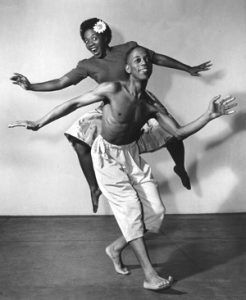
Joe Nash with Pearl Primus by Gerda Peterich, circa 1947
Joe Nash (1919-2005) was a self-taught dancer and prominent historian of African-American dance history. Growing up in New York City during the Harlem Renaissance, Nash was inspired by the black arts movement. After returning from his World War II military service, he immersed himself in a self-directed study of dance literature and photography. In the late 1940s and ’50s, Nash performed on Broadway and toured with influential modern dance artists such as Pearl Primus and Donald McKayle. He also began teaching and lecturing on dance history in Philadelphia and New York. Nash was a consultant and lecturer at the American Dance Festival from the 1990s until his death in 2005. He was widely considered one of the leading experts on the role of African-Americans in the development of modern dance. During his life, Nash donated materials from his vast archival collection to the New York Public Library, the Schomburg Center for Research in Black Culture in Harlem, The Arthur Hall Collection in Philadelphia, Florida A&M University, the American Dance Festival, and the National Afro-American Museum and Cultural Center in Ohio. Collection includes photographic prints, programs, clippings, fliers, and other printed materials.
Nathan Ockman (b.1926) was brought by his parents to an event in the 1930s that featured pioneering choreographers in modern dance, among them Anna Sokolow and Sophie Maslow. Though he received no formal dance training himself, this childhood exposure to modern dance sparked a lifelong passion for dance spectatorship. The collection contains the dance-related memorabilia (circa 1949-2006) saved by Nathan Ockman. Materials include performance programs and newspaper clippings, which are arranged chronologically. Many of the materials are annotated by Mr. Ockman.

Pearl Primus By Gerda Peterich, 1950
Pearl Primus (1919-1994) was an African-American dancer, choreographer, anthropologist, and teacher. She received the American Dance Festival’s first Balasaraswati/Joy Anne Dewey Beinecke Chair for Distinguished Teaching in 1991 and, posthumously, the Samuel H. Scripps/American Dance Festival Award for lifetime achievement in choreography.
Collection includes materials created or collected by Primus and by others dating from circa 1920 to 1994, including correspondence, writings, legal documents, research and teaching materials, clippings, programs, printed materials, photographs, sound recordings, films, videos, and artifacts.
Charles Reinhart Management, Inc. (CRMI) was involved in dance company management, festival production, grant-funded projects, and assorted professional services. Companies managed included the Paul Taylor Dance Company, Meredith Monk/The House, the Glen Tetley Dance Company, the Don Redlich Dance Company, the Lucas Hoving Dance Company, and the Donald McKayle Dance Company among others. Mr. Reinhart was the National Coordinator of the National Endowment for the Arts (NEA) Dance Touring Program from 1967 to 1978. He also developed the dance component of the NEA’s Artists-in-Schools Program (later the Artists-in-Education Program) and served as its National Coordinator from 1970 to 1981. Collection includes correspondence, printed material, and business and financial records created by Charles L. Reinhart and the employees of Charles Reinhart Management, Inc., 1956-1992.
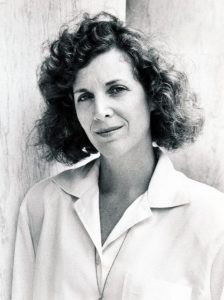
Stephanie Reinhart
Stephanie Reinhart (1944-2002) began working at the American Dance Festival in 1977 as the Director of Planning and Development and became Co-Director with Charles L. Reinhart in 1993. While on the board, Stephanie traveled to many countries to view dance and lecture on American modern dance and arts administration, and in 1993 she was awarded a Fulbright research grant to study modern dance in Argentina. The collection contains Stephanie Reinhart’s personal papers, company management materials, and materials from her 1993 Fulbright research. Her personal papers include essays, poetry, calendars, correspondence, clippings, and papers related to her Durham residence. The company management materials include slides from her time as Company Manager with Crowsnest Dance Company. The Fulbright research materials include correspondence with the Fulbright program, research, notes, articles, and both audiocassettes and transcripts of the interviews she conducted in Argentina.
